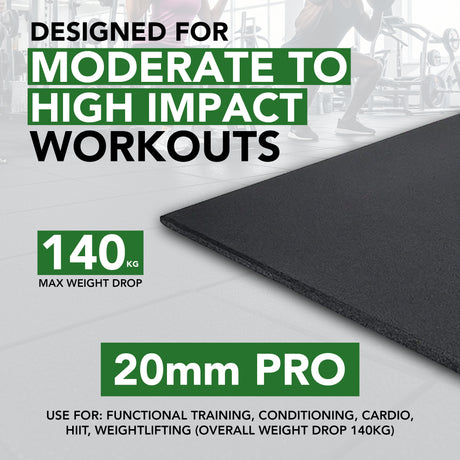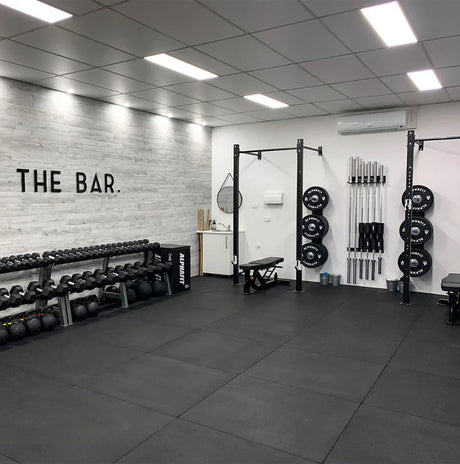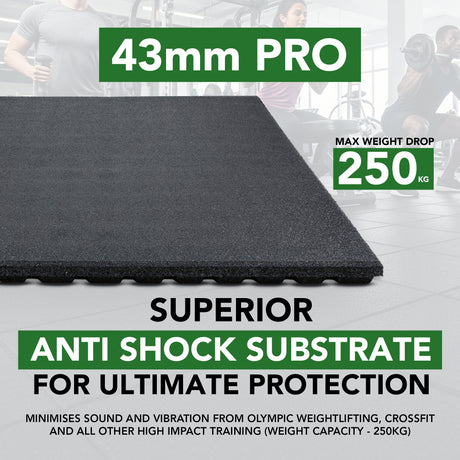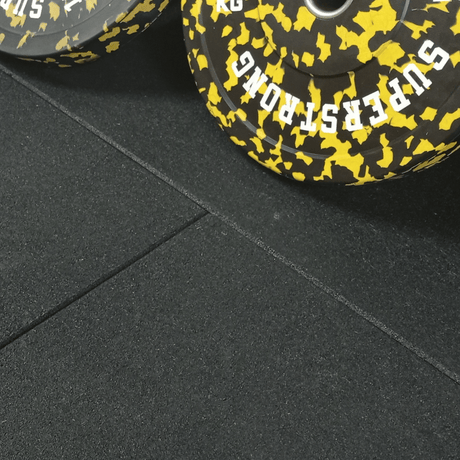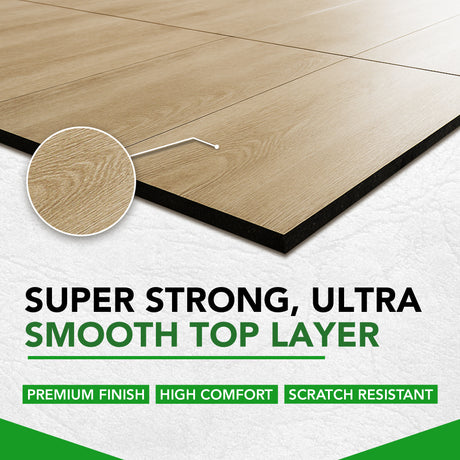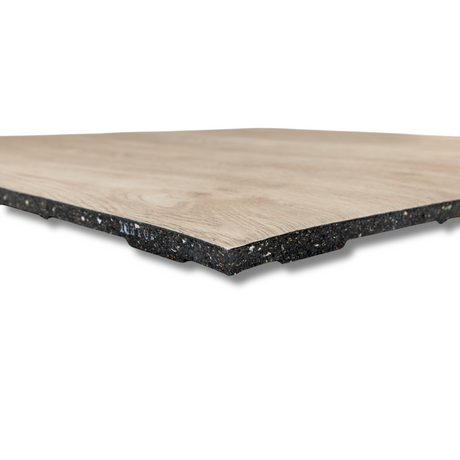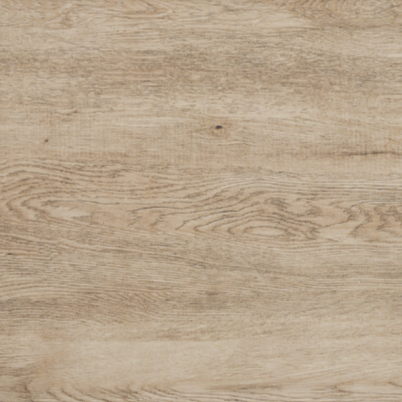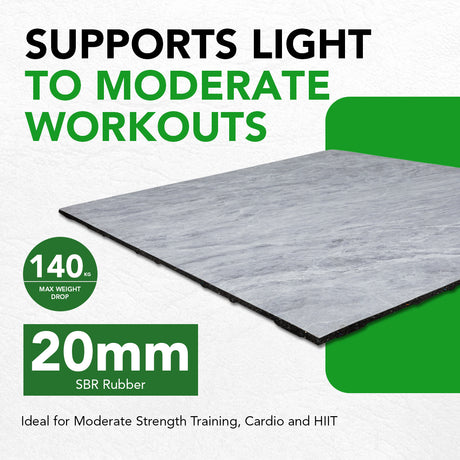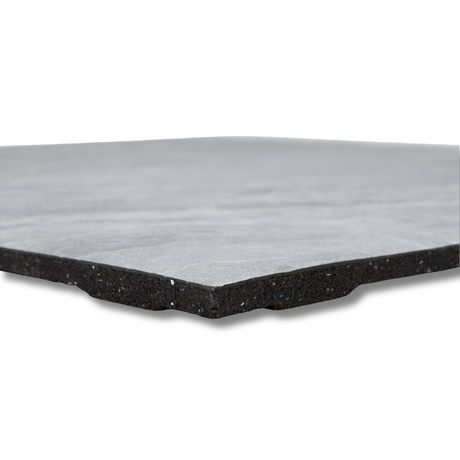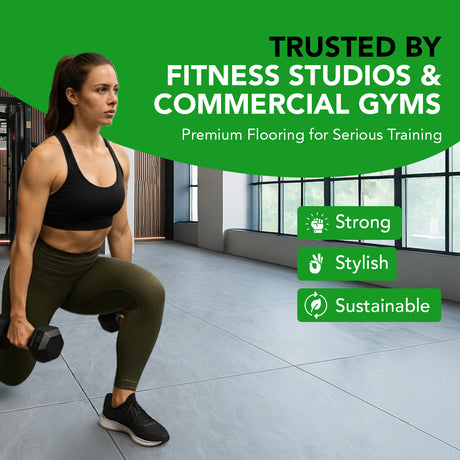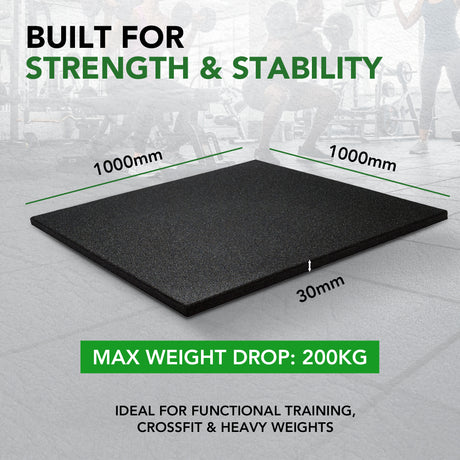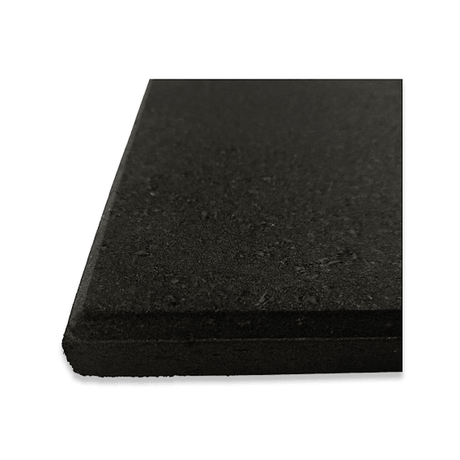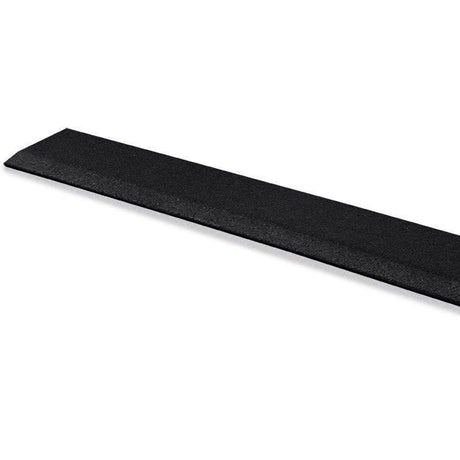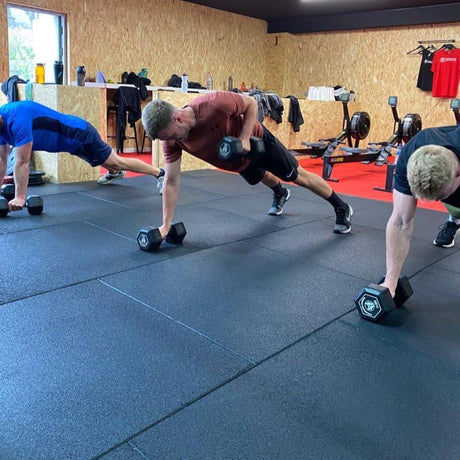[UPDATED in 2025]
Choosing the right gym flooring for your home or commercial gym may be more complex than you initially thought. This is because several factors come into play when making the best choice for your set-up. You need to pick the right material, thickness, and flooring system to support users and provide a safe foundation for exercise.
Table of Contents
From self-locking rubber mats to gym flooring rolls, you have many options to consider. In this ultimate guide to gym flooring, learn all the options you have available so you can make the best choice for your gym flooring.
Choosing the Best Gym Flooring

- Durable and resistant - flooring for gyms should be durable and resistant to heavy gym equipment and weights; it shouldn’t mark easily. On top of this, gym flooring should protect the subfloor.
- Shock absorbent and anti fatigue - the flooring needs to provide cushioning to users to absorb the shock that would otherwise hit muscles, joints, and tendons. This is an essential part of creating a safe space for exercise and fitness.
- Non-slip - flooring with non-slip properties reduces the risk of slips and falls. There should be enough traction to exercise without movement feeling restricted.
- Easy to maintain - ideally, any gym flooring should be easy to clean, maintain, and last for years to come.
- Noise and vibration reduction - if you’re dealing with large weight and heavy equipment, you will need to consider noise and vibration reduction properties as this can make a massive difference to the sound in a gym.
- Visual impact - how your flooring looks can have a big impact on the overall feel of the space. It can make a strong first impression and pull together the whole look of the facility.
Home Gym or Commercial Gym
It’s important to understand that the way you plan on using your gym helps determine the best flooring for you. Firstly, garage gym flooring tends to be different from what you would find in a commercial gym. Some gym flooring is designed with a commercial setting in mind, while others are more suited to a garage or outdoor garden gym.
Although there is a lot of crossover, there are more designer-inspired finishes for commercial gyms where aesthetic impact is more important than a home gym.
5 Things to Consider before Buying Gym Flooring

How Thick Should Your Gym Flooring Be?

5 Types of Gym Flooring
1. Rubber Rolls
Pros: Rubber rolls offer affordability and durability. These are especially good for larger commercial gyms and work out at a super affordable rate per square foot. Gym rolls are multipurpose and can still accommodate heavy equipment and free weights.
Cons: It’s important to know that gym flooring rubber rolls are heavy, making the installation tricky if you don’t have some help.
Verdict
If you like a uniformed sheet-like look to your gym, rubber gym rolls are a fantastic choice. With a gym, you often find you need flooring to suit multiple applications. Rubber fitness rolls cater to a ton of different uses, from free weights to cardio. A shock-absorbent gym flooring option is ideal for larger spaces and commercial gyms.
2. Heavy-Duty Rubber Tiles

Pros: Rubber tiles offer extreme durability and shock-absorbing properties. From 15mm to 63mm, you can get rubber tiles in a range of thicknesses to suit a variety of activities. The heavy-duty rubber tiles deliver sound insulation and non-slip capabilities to support all training types.
Cons: Typically, rubber tiles are more expensive than rubber rolls and foam tiles, but the durability is unparalleled.
Verdict
If you want value, durability, and something that will handle whatever you throw at it, including Olympic weightlifting, the High Impact Sound Proof floor tiles are a no-brainer.
3. Rubber Puzzle Tiles
Pros: Rubber puzzle tiles are a type of rubber gym flooring shaped like a jigsaw piece. They allow for very simple installation without the need for specialist fitting. Versatile and available in various colours and sizes, these tiles are an all-rounder.
Cons: This type of tiles only goes up to a certain thickness, maximum 15mm thick. This won't work for those who carry out heavy weightlifting.
Verdict
Puzzle gym tiles are excellent option for home gymers because of the simplicity of installation. They are also a good choice for light to moderate exercise with lower weight capacities.
4. High Density Foam Tiles
Pros: These lightweight interlocking foam mats are easy to fit and offer superior cushioning and comfort. Popular for disciplines such as Boxing and MMA, these tiles are the go-to option for bodyweight based exercise and specialist training.
Cons: These mats may not withstand heavier weights and are not as durable as other materials for this type of activity.
Verdict
The best option for Martial Arts, Boxing, Fitness Classes such as Aerobics, HIIT and bodyweight.
5. Artificial Grass Tracks - Sled Tracks & Sprint Lanes
Pros: Synthetic grass and turf tracks are increasingly popular in gyms especially for workouts such as functional training, crossfit, agility and interval training. The sturdy grass tracks mimic the feel of athletic turf but offer shock absorption and extra comfort.
Cons: Won't provide the best protection for heavy weights and gym equipment like alternative materials.
Verdict
Artificial gym turf is an excellent addition to any gym, offering a dedicated space for particular types of training. It is best used in specific areas adding versatility and a dynamic feel.
Conclusion: The Best Gym Flooring
As you can see, there’s a lot to think about when choosing the best gym flooring for your facility. Whether you’re building an outdoor gym, installing gym flooring in the garage or creating a large commercial gym, non-slip properties and durability are non-negotiable. By finding the most suitable flooring for your gym, you can invest in high-quality flooring once and minimise the risk of slips, falls, and injuries.
Looking for gym floor tiles with instant visual impact? Shop our interlocking gym mats in a selection of unique designs and coloured options.
You may also be interested in:-
How to Choose the Right Gym Mat Flooring for your Home Gym

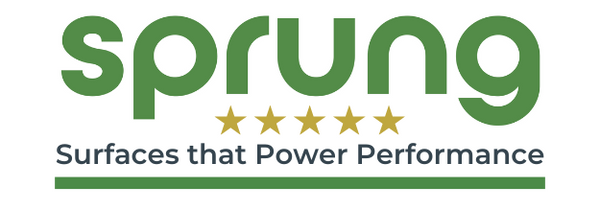


![The Ultimate Buying Guide for Gym Flooring [UPDATED]](http://www.gym-flooring.com/cdn/shop/articles/The-Concrete-Gym-Fitout-Gallery-3_1_520x500_ca3e2e41-a479-4c2a-94a6-04757a86effa.jpg?v=1755531863&width=1600)




